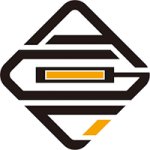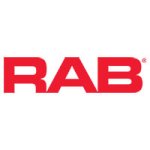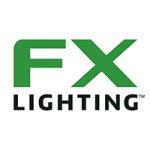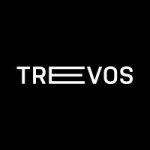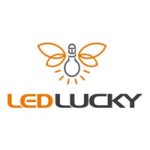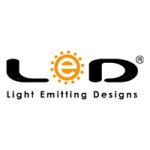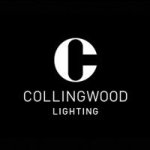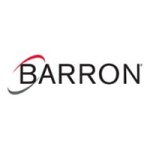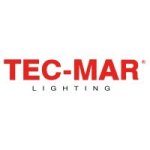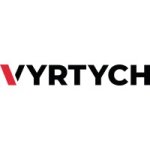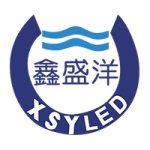Table of Contents Hide
- 1 What Is a Low Bay Light
- 2 Low Bay vs. High Bay
- 3 Design Considerations
- 4 Lighting Technology
- 5 The Ultimate Light Source for Low Bay Lighting
- 6 Design and Construction
- 7 System Integration
- 8 LED Assembly
- 9 LEDs
- 10 Thermal Management
- 11 LED Driver
- 12 Lighting Control
- 13 Secondary Optics
- 14 Ingress Protection
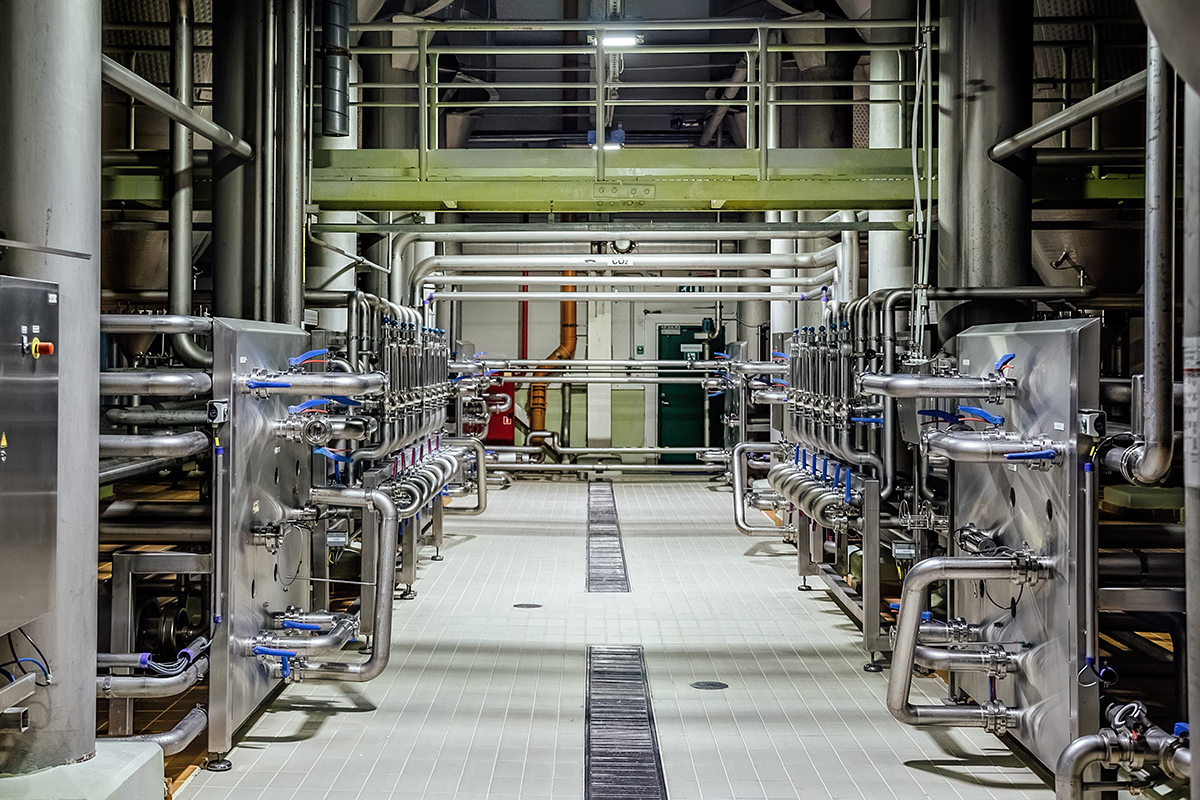
What Is a Low Bay Light
A low bay light is an industrial-grade ceiling light that provides general illumination in large, open indoor spaces where the mounting height is typically less than 6.1 m (20 ft). Industrial luminaires should not be literally interpreted as lighting systems designed only for industrial applications. They're industrial-grade products that can tolerate more extreme conditions and deliver more dependable performance than consumer-grade products. Their footprint can be found in the commercial sector as well. Operators of commercial facilities have a strong interest in incorporating a lighting solution that is powerful, efficient and tough enough to meet the needs of high-performing facilities.Low Bay vs. High Bay
Industrial luminaires are generally divided into low bay and high bay luminaires. Aside from mounting heights, there are no rigid rules to define the two categories of industrial luminaires throughout the lighting industry. The use of these luminaires are often dictated by conditions. It is not uncommon to see high bay luminaires installed low bay facilities, and vice versa. High bay luminaires find particular use in large, high-ceiling indoor facilities such as heavy manufacturing buildings, warehouses, big-box stores, convention centers, exhibit halls, airport hangars, athletic facilities or gymnasiums. Low bay luminaires are used in a variety of general purpose, industrial and commercial environments where luminaires are mounted near the area to be illuminated and where the application requires a spacing-to-mounting height ratio greater than 1.5. These environments include light manufacturing facilities, retail spaces, parking structures, warehouses, showrooms, storage areas, loading docks, canopies, stairwells, etc. While high bay luminaires are typically used in industrial facilities where a skeletal framework is used to form an expansive, high-ceiling interior space, low bay LED lights are particularly prevalent in commercial facilities which usually have mounting heights less than 20 feet.Design Considerations
Low bay lighting must balance many different considerations to ensure comfort, safety and productivity of people using the space while also making economic sense. In industrial and commercial applications, the failure-free, energy efficient operation of lighting systems is of decisive importance. Harsh operating conditions place high demands on the robustness of luminaires. A large area to be illuminated and long operating hours create challenges on the efficiencies of energy use and optical systems. A visually pleasant and comfortable environment is essential to enhancing performance, productivity or satisfaction of occupants. Glare control is always a priority in designing low bay lighting systems because of their lower mounting heights, when compared with high bay systems.Of particular significance is that low bay lighting should provide substantially uniform illumination throughout an area. High horizontal uniformity of illuminance can eliminate visual fatigue caused by otherwise continuously adapting between two significant luminance levels. Uniform lighting also allows repositioning of task locations, merchandise display, or production machinery without needing to relocate luminaires. In low bay facilities such as merchandising spaces, racked warehouses and machine shops, adequate vertical illuminance is just as important as other components of lighting design. For example, high vertical illuminance on shelf fronts or on stocked goods in supermarkets or warehouses allows for best possible recognition, and proper distribution of light that maintains vertical brightness contributes to a safe working environment in manufacturing facilities.
Lighting Technology
Low bay light fixtures conventionally utilized metal halide and fluorescent lamps as the light source. Metal halide lamps, though used widely in high bay and low bay facilities, suffer from a number of disadvantages. The start-up time of metal halide lamps typically takes five to seven minutes and the hot restrike process can take up to twenty minutes. An intrinsic issue with these HID lamps is that their near-point emission pattern makes it impossible to achieve a uniform light distribution. Poor illuminance uniformity leads to increased fixture density, which translates to added up-front, energy and maintenance costs. The quartz arc tube of metal halide lamps operate at high pressures and generate high temperatures during operation. High stresses of operation can result in envelope failure (bulb explosion). This may cause substantial injury in the workplace or during maintenance, and even pose risks in flammable environment or explosive atmospheres. Fluorescent lamps are not plagued by these concerns but their single-lamp light output is incomparable to metal halide lamps. Moreover, metal halide and fluorescent lamps have many disadvantages in common, which include UV emission, fragile construction, poor dimming performance, reduced life span due to frequent switching, flickering and stroboscopic effect, and mercury disposal/recycling.In addition to aforesaid issues, legacy lighting technologies are significantly challenged to catch up with ever-changing energy codes and to provide aggressively low life-cycle costs that offer businesses a compelling advantage. This gives new technology an unprecedented opportunity. LEDs are a rapidly evolving technology that is moving into all areas of lighting applications at an extremely fast pace. LEDs are solid state devices that are designed in a way that allows a controlled injection of both types of charge carriers, electrons and holes, into a quantum well (QW) based active region sandwiched between an n-doped GaN layer and a p-doped GaN layer. The intracrystalline recombination of these holes and electrons in the active region upon application of a forward voltage across the p-n junction results in energy being emitted in the form of electromagnetic waves, which radiate outwards as light. The narrow band emission is down-converted into broad-spectrum white light within the device package. An LED must be packaged before it can be used as a light source. An LED package provides an architecture for performing electroluminescence and the subsequent photoluminescence while protecting semiconductor dies from direct environmental exposures and allowing the LEDs to interface electrically, thermally and mechanically with the system.
The Ultimate Light Source for Low Bay Lighting
The ability of InGaN LEDs to produce electroluminescence with a high internal quantum efficiency (IQE) allows them to hold a significant lead over legacy light sources in term of luminous efficacy. Metal halide and fluorescent lamps have efficacies below 100 lm/W, whereas the highest efficiency blue pump LEDs exhibit efficacies in excess of 200 lm/W. The operating principle of converting electrical power to optical power through injection electroluminescence within a semiconductor package allows LEDs to have excellent resistance to wearout degradation. LEDs provide a service life of greater than 50,000 hours when effective thermal management is implemented. The instantaneous response of LEDs to changing current lends them perfectly to dimming control. Excellent on/off/dim controllability, along with the semiconductor characteristics, allows the light source to work seamlessly with solid state control circuits for advanced lighting control. LEDs are highly directional by nature. This feature makes it possible to achieve a precise light pattern with a high optical efficiency. An array of LEDs can be arranged to form a large light emitting surface (LES) that delivers illuminance with a uniformity not possible with legacy light sources. LEDs do not distribute wavelengths of light outside of the visible spectrum, which means no UV and IR light is produced. A precisely controllable spectral composition of the radiant energy allows LED luminaires to illuminate with any desired color characteristics (color temperature and color rendition). The solid state durability of LEDs make them a great choice in industrial applications where resistance to vibration from large machinery and potential mechanical shocks is part of the lighting challenge.Design and Construction
Low bay LED lights are typically designed as integrated systems rather than lamp-based systems. Integrated low bay LED systems achieve their performance and reliability through a holistic approach which factors the thermal, electrical and optical aspects of LED characteristics into the system design. Unlike lamp-based LED luminaires of which the performance and reliability are determined by the retrofit LED lamps, in integrated LED systems the entire luminaire is designed and built for creating an optimal operating environment for the LEDs. The luminaire housing is used as the heat sink, which provides a considerably larger surface area for thermal conduction and convection. The luminaire also provides sufficient spaces for accommodating high performance driver circuits which usually come with a substantial volume. The photometric performance is derived from the light source in conjunction with the luminaire's optical system. The result is a robust LED system with efficiency, reliability, durability, controllability, and optical characteristics remarkably superior to lamp-based luminaires.From commercial buildings and retail spaces to manufacturing facilities and warehouses, low bay LED lights have a diversity of use not found in other types of LED luminaires. These lighting systems, therefore, come in a variety of styles, shapes, light distributions, lumen packages, ingress protection (IP) ratings, etc. Low bay lights are predominantly direct lighting systems that distribute all emitted light in a downward direction. Depending on the light distribution requirement, low bay LED lights are available in a round, linear, or square/rectangular form factor. The design of round low bay LED lights has evolved from bulky copies of conventional metal halide systems into a low profile design from which the term "UFO" was coined. While round LED luminaires often come as fully integrated systems, linear and square/rectangular low bays may have a modular construction. The building block of such modular systems is a light module which integrate the LED assembly with the heat sink and secondary optics into a self-contained light assembly. The modular design delivers flexibility and scalability in optical design and light output, and allows for both easy servicing and future upgrade.
Low bay LED lights for use in industrial facilities typically necessitate a rugged construction, thermally efficient design, and high IP rating to ensure they survive extreme temperatures, corrosive atmospheres, high humidity, dusty environments, and/or vibration from large machinery. Commercial environments may require the luminaires to carry a coherent look for architectural integration with the space.
System Integration
A low bay LED lighting system comprises an LED assembly, an optical system, a driver, a thermal management system, and a housing which typically serves as a heat sink and thus becomes a part of the thermal management system. LED systems may be designed in various forms of integration. For example, the LED assembly may be integrated with lenses and heat sinks to form a light module; in driver-on-board (DOB) systems, LEDs and driver components are co-located on the same circuit board to form a light engine. Whatever form of integration an LED luminaire has, a high-performing product is a result of a multidimensional engineering work which involves thermal management, drive current regulation, and optical control.- Energy efficiency is especially a priority in low bay application because of the long operating hours and relatively high wattages typically involved. The system efficiency of an LED lighting system is the cumulative efficiency of its LEDs, driver and optics.
- The need for longevity from an LED luminaire runs parallel with the quest for energy efficiency. The lifespan of LEDs is particularly affected by the operating temperature and drive current.
- While LEDs have a natural lifespan that ends in a wearout mechanism, the driver that regulates the power to LEDs is the first component of an LED system to fail due to the fundamental reliability limitations of many of the subcomponents of the driver.
- Color quality is just one component of quality lighting. Other quality aspects such as flicker, glare and uniformity that are not source-intrinsic are more of a concern.
LED Assembly
An LED assembly or module is an assembly of LED packages on a printed circuit board (PCB) which allows the LEDs to thermally, electrically and mechanically interface with the lighting system. The circuit board is usually a metal core printed circuit board (MCPCB) that includes a thermally conductive dielectric layer sandwiched between a copper layer and an aluminum substrate. The dielectric layer, usually made of a ceramic-infused epoxy, is the most important layer in the MCPCB construction as it affects electrical breakdown strength and thermal conduction efficiency of the MCPCB system. The most important engineering point of an LED module is the interconnects, which are often solder joints, between LED packages and the MCPCB. The integrity of interconnects is one of the key reliability determinants of an LED luminaire. It is constantly challenged by operational stresses from thermal, electrical and environmental loads. Solder joint reliability can be undermined by thermal cycling, electrical overstresses, and vibration. Formation of reliable solder joints depends on solder material properties, reflow profile, and the metallization of the LED package and PCB.LEDs
LED packages in common use for low bay applications include mid-power LEDs built on the plastic leaded chip carrier (PLCC) platform and high power LEDs built on a ceramic substrate. Mid-power packages have been a long time favor of lighting manufacturers since they have the highest efficacy and lowest cost compared with other types of packages. However, in industrial applications where LEDs operate under various stress conditions, mid-power packages become a bottleneck of an LED system. The inherent deficiency in package design causes these LEDs loaded with failure mechanisms such as discoloration of package housing, lead frame corrosion, electromigration caused by high drive current or excessive current density, and blowout in the bonding wire due to excessively large current. As a result, the light output of mid-power LEDs degrades at a very fast rate when they're stressed by high thermal loads and high drive currents. Accompanying the rapid lumen depreciation process is color shift, which can be more problematic. On the other side, high power packages that come with high initial costs may actually be the least expensive solution after taking their long lifespan into account. High power LEDs have a robust construction which can tolerate extreme ambient conditions and high drive currents. These LEDs are typically incorporated in systems that are designed to operate with a high lumen density and in environments with harsh environmental conditions such as high ambient temperatures, vibration, and presence of corrosive gases.Spectral quality is another major consideration when selecting a light source. An LED package can be characterized as having a particular spectral power distribution (SPD), which designates the light source's correlated color temperature (CCT) and color rendering index (CRI). The luminous efficacy of LEDs is in tradeoff with both their color rendering performance and CCT on the warm side of the Kelvin scale. This is because both high color rendering and warm white LEDs have a large amount of longer wavelength light in their spectrums. In white LEDs longer wavelength light must be down-converted from short wavelength light emitted by the LED chip. This process, known as photoluminescence, produces Stokes energy loss, which results in reduced energy efficiency and increased thermal load. Since the sensitivity of the human eye decreases over the spectral band of long wavelengths, the conversion efficiency from radiant flux to luminous flux declines.
To put it simply, the higher the CRI or lower the CCT, the lower the luminous efficacy. That's why lighting manufacturers are reluctant to produce high CRI lighting products, and luminaires with an extremely high CCT (6000 K - 6500 K) are being heavily promoted. However, there're many applications where the benefits of high color rendering or an appropriately low color temperature outweighs that of high efficacy. When low bay LED lights are the only illumination source for both general and task lighting in visually demanding environments, the CRI, including Ra and R9, of lighting should be sufficiently high. Activities involving color selection or design generally require the light source to have a minimum Ra of 90 and a minimum R9 of 25. Most commercial and industrial applications use light sources of 3500 K to 5000 K. An excessively high CCT may lead to an unnatural, uncomfortable appearance of a space, and ill-timed exposure to high CCT light which has a blue-enriched SPD may produce negative biological effects on the human body.
Aside from color temperature and color rendering, color consistency from luminaire to luminaire may be a design component critical to the success of lighting installation in some applications. When minimal color variation across luminaires of the same installation is needed, LEDs incorporated in these luminaires must be binned for their color temperatures to deliver projects with uniform whites.
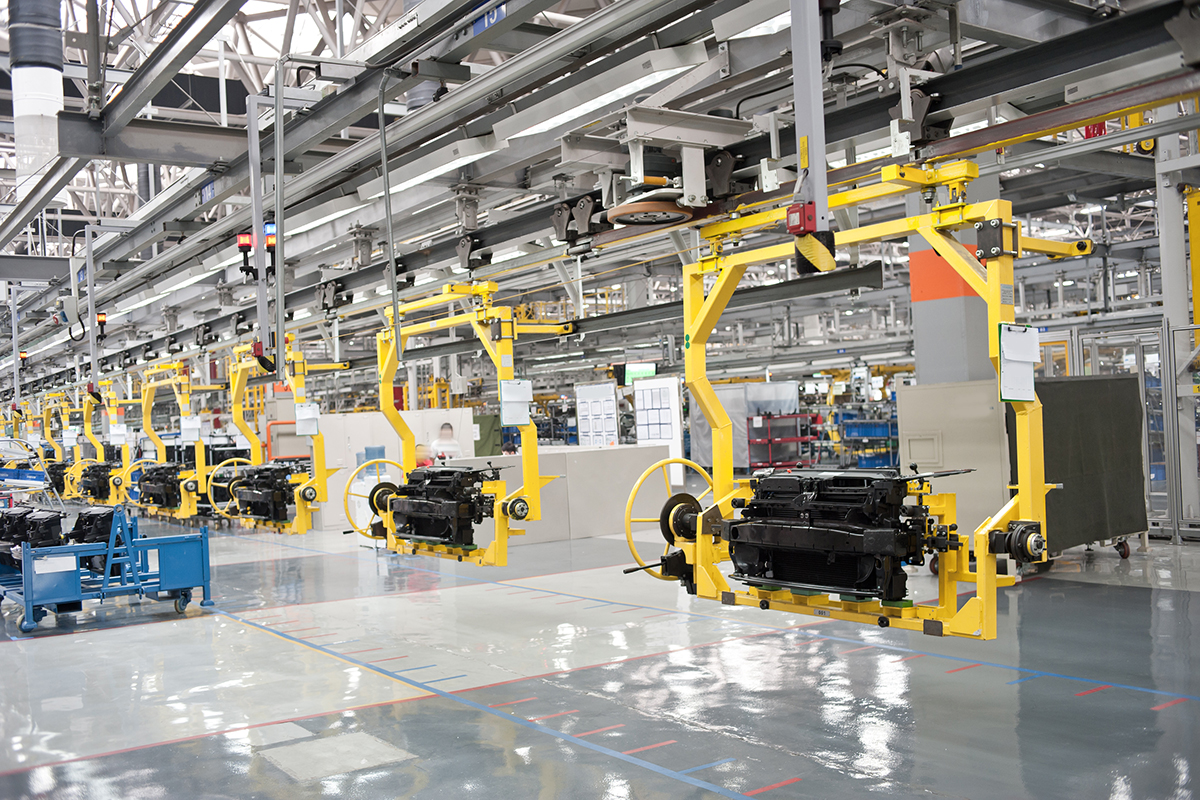
Thermal Management
One of the major challenges of designing an LED lighting system is to keep the LED junction temperatures below the maximum rated temperature. LEDs are highly efficient in converting electrical power into optical power. However, still more than half of the electrical power fed to LEDs are converted into heat. The heat trapped within the semiconductor package must be dissipated, otherwise the temperature will rise and eventually trigger and accelerate temperature-dependent failure mechanism. Operating LEDs beyond the maximum rated junction temperature can cause atomic defect generation and growth in the active region of the diode, which ends up in reduced internal quantum efficiency (IQE). Thermal degradation of phosphor will reduce photoluminescence quantum yield. Heat also induces package material deterioration, causing encapsulant yellowing or carbonization, and discoloration of the plastic housing in mid-power packages. The consequences of LED thermal degradation include permanent reduction in light output (lumen depreciation) and color shifts, which both shorten the useful life of LEDs.The amount of heat that can be removed from the LED junction depends upon the design of the thermal path from the LED to the ambient atmosphere. The weakest point of a thermal transfer path is the interconnect between the LED package and the PCB, and the most important component in a thermal management system is the heat sink. It's vital for solder joints to maintain high reliability and efficiency in thermal conduction under high operational stresses. The function of a heat sink is to absorb the heat generated from the LEDs and to increase the surface area over which the heat can be dissipated. Most LED heat sinks are made from die cast, cold forged, or extruded aluminum. The design of the heat sink for low bay lighting systems is seldom limited by the shape and geometry of the LED luminaire. Hence it is not a big challenge as long as lighting manufacturers do not cut corners. In addition to high performance solder joints and high capacity heat sinks, the ability of an MCPCB to effectively spread the heat out over the contact area of a heat sink is of indispensable importance. While a dielectric layer with high thermal conductivity is the key to high efficiency heat dissipation of an MCPCB, a thermal interface material (TIM) is frequently used to reduce interfacial thermal resistance between the circuit board and heat sink.
LED Driver
The driver is a critical component of a low bay LED system as it regulates power, provides controllability, and handles tough transient environments. Rather than regulating the voltage, an LED driver is designed to keep a consistent current running through the LEDs so that a stable, non-flickering output of visible light is produced. A constant current LED driver eliminates changes in current due to variations in forward voltage and also protects the LEDs from line-voltage fluctuations that can cause excessive changes in current. The efficiency of the LED driver plays a key role in determining the overall efficiency of an LED luminaire. A highly efficient driver dissipates less heat, thus produces less stress to temperature-sensitive driver components and light sources. The LED driver is often the first component to fail in an LED system because passive energy storing elements (inductors and capacitors) can limit the lifetime and reliability of LED drivers. The LED driver is also the most influential contributor to LED failures simply because many driver circuits are inadequately designed and fail to protect LEDs from power surges and poor incoming power quality.LED drivers are typically switch mode power supply (SMPS) systems which are adopted for their high power conversion efficiency. An SMPS regulates power by rapidly switching a series element on and off so it dissipates almost no power. The output is regulated by varying the frequency or duty cycle of a saturated power switch based on pulse-frequency-modulated (PFM) or pulse-width-modulated (PWM) control signals from respective controllers. Switching regulators are able to generate load voltages that are higher than the supply voltage or of opposite polarity. The versatility of switching regulation allows configuration for the buck, boost, buck-boost, or flyback topology in isolated and non-isolated applications. Many low bay LED lights employ a single-stage power supply which combines functions of power factor correction (PFC) and DC-DC converter in one circuit. The single-stage solution saves 20-50% of the circuit parts count and has less internal losses compared with the two-stage solution. However, single-stage power supplies may generate a fair amount of ripple due to incomplete suppression of AC waveform after rectification. The ripple current can cause objectionable visual effects such as flicker and stroboscopic effects. In addition to a high quality output, two-stage power supplies provide better immunity and dimming performance than low cost single-stage circuits.
A major disadvantage of switch mode power supplies is that high frequency switching operation generates electromagnetic interference (EMI) radiation. This poses a design challenge to overcome because additional circuits for EMI filtering and screening can double the overall cost of the LED driver. In low-cost designs, linear power supplies become an option because they're practically absent in EMI. Reduced component count coupled with a relatively simple design gives these power supplies advantages of low up-front cost and high reliability. However, linear power supplies have the fundamental disadvantage of low power conversion efficiency because they regulate output by controlling the forward voltage drop across a power transistor biased in the linear region. High dropout voltage can lead to a high life-cycle cost when taking into consideration the need for high power systems to achieve high energy savings across long operating hours in industrial and commercial applications. The dropout voltage also generates a significant amount of heat that introduces an addition thermal stress to an LED system. Linear driver circuits have an inherent deficiency of delivering low ripple current, surviving line transients, and providing galvanic isolation.
Lighting Control
Trends in lighting demand ever more control of light output. The on/off/dim capability of LEDs allows lighting to become tremendously adaptive to user needs and preferences. The ability of an LED driver to dim LED loads has a huge impact on its integration with controls. Constant current LED drivers can be designed to support constant current reduction (CCR) or pulse-width modulation (PWM) dimming. CCR or analog dimming refers to control of light output by varying the amount of current flowing through the LEDs. Dimming with PWM involves switching current at a high frequency between zero and the rated output current. Although PWM dimming is often preferred for its ability to keep the CCT consistent over the complete dimming range, the majority of low bay LED lights are equipped with analog dimming circuity which provides a low cost solution and can be controlled with a variety of protocols such as 0-10V, DALI, and ZigBee. LED drivers with a 0-10V interface can be easily integrated with standard lighting components such as sensors (photocell, occupancy, or combination). DALI offers more functionality than 0-10V control. It can digitally assign sensors and other controls to one or a group of luminaires without complicated wiring. As lighting gets more connected, wireless lighting controls are becoming increasingly more popular as they are easily deployable. The promise of Internet of Things (IoT) drives demand to build lighting control systems on low-power wireless networks that are robust, scalable, and interoperable.Secondary Optics
The light distribution of low bay LED lights is often achieved via specialized secondary optics which either regulate luminous flux from the entire array of LEDs or control the photometric distribution of individual LEDs. Conventional optics such as diffusers, refractors and reflectors can be used to provide optical control for LED assemblies. Diffusers provide substantially uniform illumination throughout an area. However, the luminance within the eye-level field of view may be as high as looking straight up at the luminaires. In large spaces, this will reduce the level of visual comfort. Refractors utilize the change in direction that light undergoes as it passes through two-or three-dimensional prisms. They are often used to improve vertical illuminance. When a series of prisms are formed on the surface of a substantially flat sheet of a translucent material, then the optical sheet is sometimes referred to as a prismatic lens. Prismatic lenses are used to reduce luminance at the near-horizontal viewing angle. Reflectors are an economical solution for regulating luminous flux from an LED module with a small or narrow LES. However, low bay LED systems are typically designed with a large LES which is intended to uniformly distribute light over a large area. When used in such systems, reflectors will only control the light that strikes the reflective surfaces and ignore a significant portion of light that doesn't interact.While conventional optics provide a straightforward solution to optical control of LED light, the full optical potential of LEDs can only be unlocked when optics are designed separately for every source. A lens array, injection molded from acrylic or polycarbonate, extracts light directly from the source and precisely directs it through total internal reflection (TIR). The optical regulation is provided by compound lenses which use an array of lenses with a common axis. The lens array is indexed to the circuit board to ensure consistent optical alignment between the compound lens and LED. This type of optics provides considerably more efficient light extraction and precisely controlled optical distributions than conventional optics as virtually every ray of light emitted by the LED is harvested. An added benefit is that the compact lens array allows luminaires to be constructed with a very low profile, which is highly desired in low lay installations.





